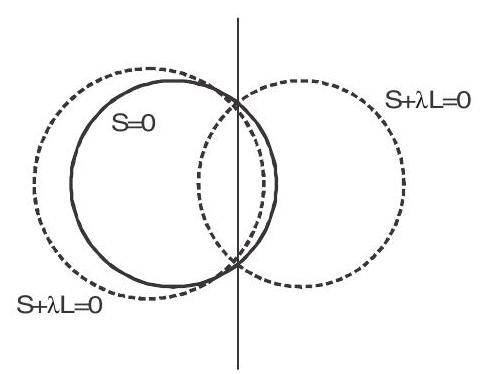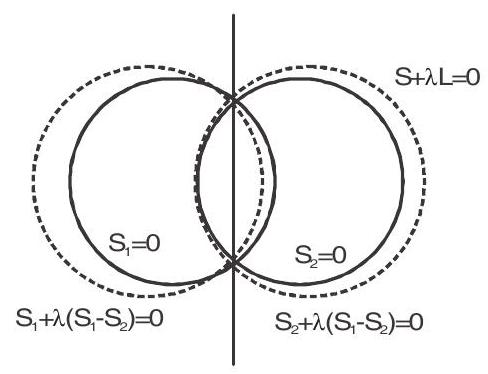CIRCLE-9 (Co - Axial System of Circles)
Co - Axial System of Circles
A system of circles or family of circles, every pair of which have the same radical axis are called co-axial circles
1. The equation of family of co-axial circles when the equation of radical axis and one circle are given

Then equation of co-axial circle is
2. The equation of co-axial system of a circles where the equation of any two circles of the system are

respectively is
and
3. The equation of a system of co-axial circles in the simplest form is
The common radical axis is the
The equation of system of co-axial circles in the simplest form is
The common radical axis is the 
Examples
1. Find the equation of the system of circles co-axial with the circles
Show Answer
Solution:
Given circles are
System of co-axial circle is
Centre of this circle is
lies on radical axis
2. If the circumference of the circle
(a)
(b)
(c)
(d)
Show Answer
Solution: (c)
Equation of radical axis (common chord of these circles) is
Centre of first circle is
Since second circle bisects the first circle
Therefore centre of first circle must lie on common chord.
3. The equation of the circle passing through the point of intersection of the circles
(a)
(b)
(c)
(d)
Show Answer
Solution: (d)
Equation of any circle passing through the point of intersection of the circles is
This circle passes through the point
Required circle is
4. If the common chord of the circles
(a)
(b)
(c)
(d)
Show Answer
Solution:
The equation of common chord is
The combined equation of the straight lines joining the origin to the points if intersection of
This equation represents a pair of perpendicular lines










